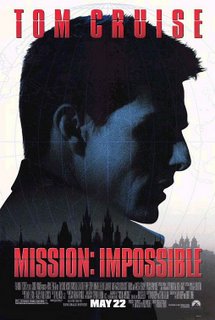Mission Impossible: Tom Cruise against photoresistors
Thos e who have seen the successful film
e who have seen the successful film
This sequence, apart from being homage or maybe plagiarism to Topkapi, a Jules Dassin film from the 60s, is one of the best examples of a movie making the most of everyday technology. We are so used to photovoltaic cells opening the bank’s or the mall’s doors for us that we find it usual to link light and electri city. Nevertheless, the discovery of the photoelectric effect (electric current produced by light, which means a wave that spreads through a vacuum acting over matter) was one of the highlights in later 19th / early 20th century science. It got to solve a several centuries long controversy among physicians about the nature of light (wave or matter) and meant a Nobel Prize for Albert Einstein (he actually got it for this reason, not for his Theory of Relativity).
city. Nevertheless, the discovery of the photoelectric effect (electric current produced by light, which means a wave that spreads through a vacuum acting over matter) was one of the highlights in later 19th / early 20th century science. It got to solve a several centuries long controversy among physicians about the nature of light (wave or matter) and meant a Nobel Prize for Albert Einstein (he actually got it for this reason, not for his Theory of Relativity).
Once the link between light and electricity was found, photoresistors (known by the acronym LDR, light-dependent resistor) didn’t take long to be launched. They are electric resistors whose resistance changes with light: in the absence of light they have a big resistance to electricity and therefore they block an electric circuit; in presence of light, though, they don’t offer any resistance and allow electricity to flow. We can see an image of a LDR here.
any resistance and allow electricity to flow. We can see an image of a LDR here.
Thus, when the ray of light received by the LDR gets interrupted by the body of someone passing by, the LDR doesn’t allow current to flow anymore. The electronic circuit avoiding the opening of an automatic door, or the buzz of an alarm, or whatever, gets blocked. This is the simple mystery hidden by a lot of automatic systems like water taps opening and closing and lamps switching on and off without a manual switch. LDRs aren’t expensive and could be used for light and water automatic regulation at home, but the experiences which took place up to the present produced a backlash from users. Like Tom Cruise in the movie, we feel restless about the sensation of being controlled by invisible forces.

0 Comments:
Post a Comment
<< Home